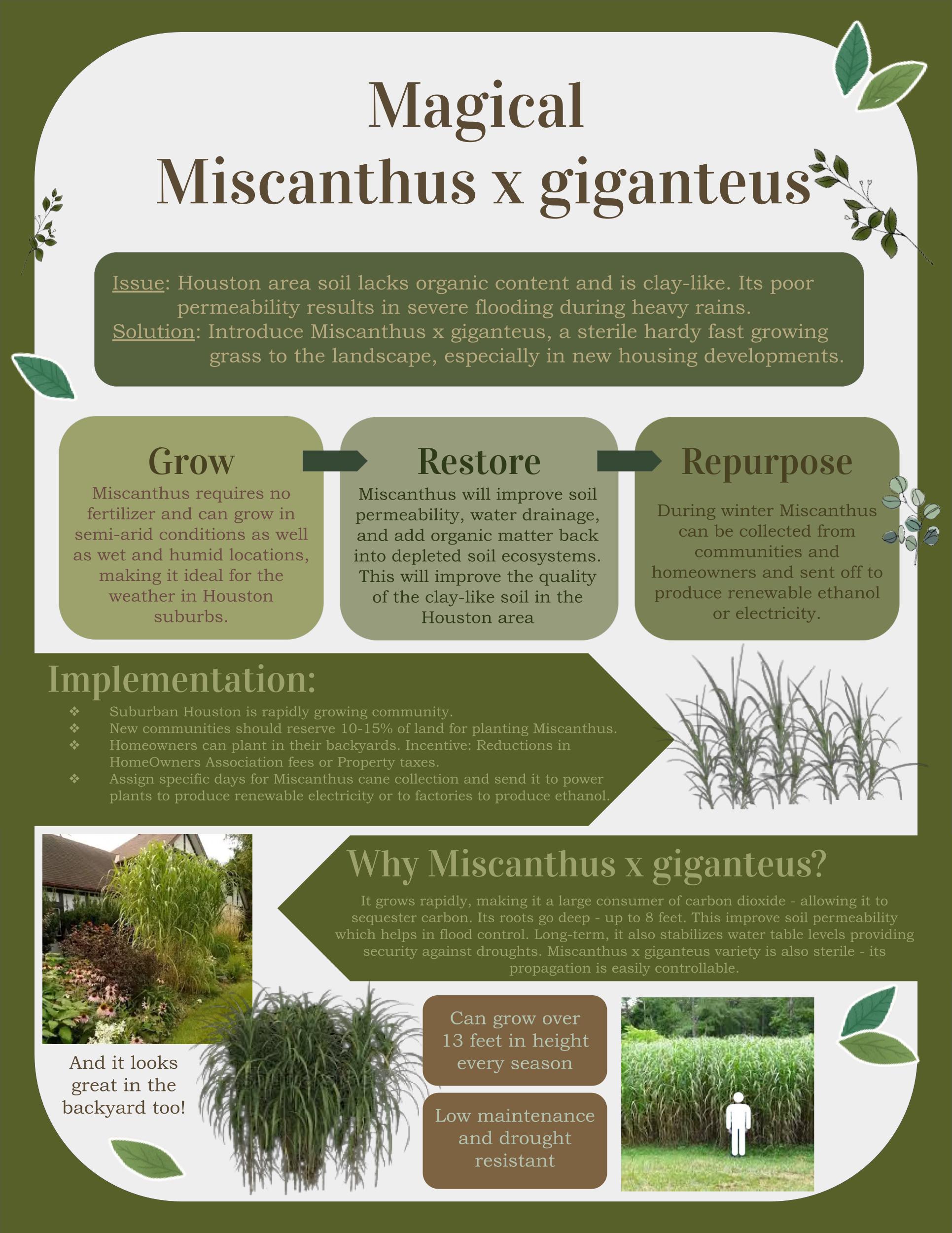For several years, drought-like conditions have plagued my community in the suburban Houston area. In addition, our clay-like soil lacks organic content and its poor permeability results in severe flooding during heavy rains. My proposal for combating these is to introduce Miscanthus x giganteus in conservation areas, people’s backyards, and around retention ponds. Miscanthus is a hardy grass that can tolerate droughts and rains and because it is sterile, it can propagate only via rhizomes making its spread controllable.
Miscanthus can grow as much as 13 feet in a single season and its roots sequester significant organic matter into the soil. Over time, this will improve the soil permeability, thereby reducing the incidence of flooding while also recharging the water table to combat drought. During its growth phase Miscanthus will remove atmospheric CO2, and in the winter the stalks could be collected from communities and homeowners on specific days and sent for producing renewable ethanol or electricity.
My plan would call for Miscanthus to be planted over 10-15% area in communities with reduction in property taxes used for incentivization. Such an action will help to combat both flooding and drought while providing a greenhouse gas reducing impact to the environment.
Contact us
Thank you for your interest in contacting Future Engineers. We look forward to connecting with you!
General Inquiries
support@futureengineers.orgSponsorship Inquiries
sponsor@futureengineers.org
